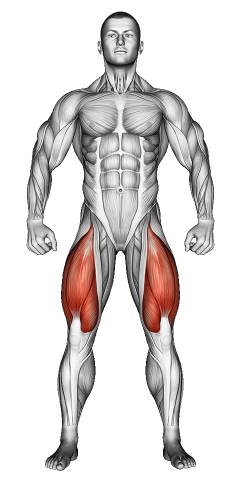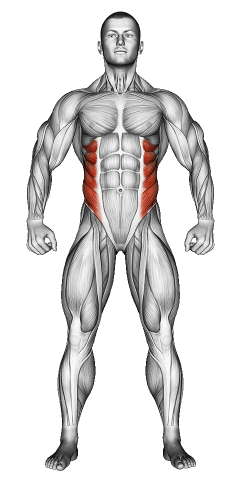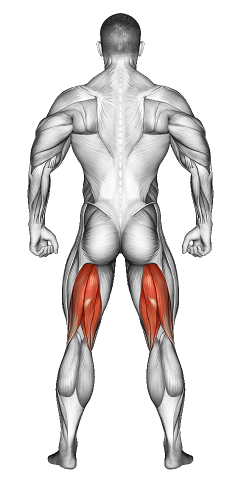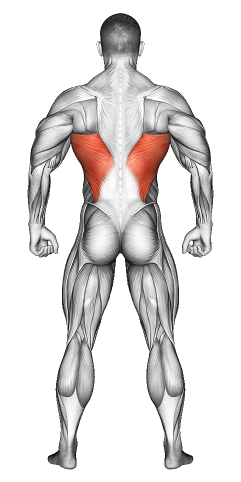Revolved Side Angle Pose (Parivrtta Parsvakonasana): Video Tutorial & Yoga Guide

Written By: Claude Michael
Updated: Jan 14, 2025
| Workout | Revolved Side Angle Pose (Parivrtta Parsvakonasana) |
| Primary Muscle Group | Quads |
| Secondary Muscle Group | Obliques, Hamstrings, Lats |
| Equipment Required | None |
| Force Type | Bodyweight |
| Mechanics | Balance and Twist |
| Exercise Type | Yoga |
| Difficulty | Intermediate |
Revolved Side Angle Pose (Parivrtta Parsvakonasana): Video Tutorial & Yoga Guide
- 1.Revolved Side Angle Pose (Parivrtta Parsvakonasana): Muscle Groups
- -1.1Primary Muscle Group
- -1.2Secondary Muscle Group
- 2.Revolved Side Angle Pose (Parivrtta Parsvakonasana): Step-by-Step Guide
- 3.Revolved Side Angle Pose (Parivrtta Parsvakonasana): Overview
- 4.Revolved Side Angle Pose (Parivrtta Parsvakonasana): Benefits
- 5.Revolved Side Angle Pose (Parivrtta Parsvakonasana): Pro Tips & Advanced Techniques
- 6.Revolved Side Angle Pose (Parivrtta Parsvakonasana): Progression Plan
- 7.Revolved Side Angle Pose (Parivrtta Parsvakonasana): Frequently Asked Questions (FAQs)
Secondary Muscles Group
Revolved Side Angle Pose (Parivrtta Parsvakonasana): Step-by-Step Guide
- Step 1: Start in a standing position. Step your left foot back into a lunge, keeping your right knee bent at a 90-degree angle and stacked over your ankle. Press your left heel back with your toes tucked under.
- Step 2: Bring your palms togClaude at your chest in a prayer position. Inhale to lengthen your spine, and as you exhale, twist your torso to the right. Place your left elbow on the outside of your right thigh.
- Step 3: Press your palms togClaude to deepen the twist. Use your elbow as leverage to rotate your chest toward the ceiling. Keep your gaze upward or to the side for balance.
- Step 4: Press firmly through your back foot and engage your core to maintain stability. Keep your hips level and your back leg straight.
- Step 5: Hold the pose for several breaths. Return to the lunge position and repeat on the opposite side. You’re doing great—feel the twist and the stretch in your body!
Revolved Side Angle Pose (Parivrtta Parsvakonasana): Overview
Revolved Side Angle Pose (Parivrtta Parsvakonasana) combines a deep twist with a strong lunge. It stretches your spine, shoulders, and legs while building strength in your core and improving balance. This pose promotes flexibility and detoxification.
Revolved Side Angle Pose (Parivrtta Parsvakonasana): Benefits
This pose strengthens your legs and core while stretching your shoulders, spine, and hips. It improves balance, posture, and flexibility. The twist stimulates digestion and detoxifies your body, making it a powerful addition to your yoga practice.
Revolved Side Angle Pose (Parivrtta Parsvakonasana): Pro Tips & Advanced Techniques
- Keep Your Back Leg Straight: Engage your back leg and press through your heel to stay steady.
- Align Your Hips: Keep your hips level and avoid letting them twist unevenly.
- Lengthen Your Spine: Focus on extending your spine as you twist to avoid compressing your lower back.
- Breathe Deeply: Use your breath to stabilize and deepen the twist. Inhale to lengthen and exhale to rotate further.
Revolved Side Angle Pose (Parivrtta Parsvakonasana): Progression Plan
Beginner
Intermediate
Advanced
Revolved Side Angle Pose (Parivrtta Parsvakonasana): Frequently Asked Questions (FAQs)
What muscles does this pose work?
+It strengthens your legs, core, and back while stretching your spine, shoulders, and hips.
Can beginners try this pose?
+Yes! Start with a block under your hand or practice the twist with less depth.
How does this pose help with digestion?
+The twisting motion massages your abdominal organs, stimulating digestion and detoxification.
How often should I practice Revolved Side Angle Pose?
+Include it in your yoga routine 2-3 times a week to build strength, flexibility, and balance.
What mistakes should I avoid?
+Don’t round your back or let your hips twist unevenly. Focus on keeping your spine straight, your back leg engaged, and your breath steady.
Share
Don’t Wish for It, Work for It – Join the FlexXP Newsletter Today!
Thank you for signing up for the FlexXP Newsletter!
This site is protected and the Google Privacy Policy and Terms of Service apply.



